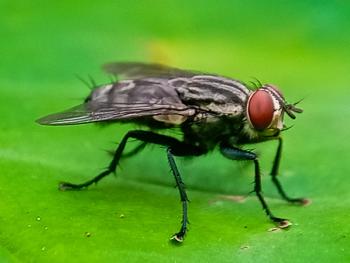
The "blue dot dilemma" aka what do I do with positive Snap tests (Proceedings)
In my opinion, the introduction of in-house enzyme-linked immunosorbant assays for infectious disease screening has been one of the most useful innovations in veterinary medicine. On occasion however it can create a mild "dilemma" for us as clinicians.
In my opinion, the introduction of in-house enzyme-linked immunosorbant assays for infectious disease screening has been one of the most useful innovations in veterinary medicine. On occasion however it can create a mild "dilemma" for us as clinicians. One of the keys to minimizing these dilemmas is understanding how the assays work and what are they testing for. The first time a bright-eyed and bushy tailed student asked me how exactly does this work? or What's in the "blue juice"? The best answer I could come up with was...magic. Since then I have tried to understand what each assay does and couple this with an understanding of the diseases to make rational decisions about the results of the tests.
Antigen or antibody?
In general, a positive result for an antigen test confirms infection. A positive result for an antibody test confirms exposure. Interestingly even though FIV and Borrelia are only antibody tests, the biology of the infections suggest that enough exposure to develop an antibody response combined with the ultra-low spontaneous immune clearance rate means that in these cases antibodies=infection. A positive test result however is not a replacement for clinical judgment so all results must be put into context with the patient's signs and history.
Which dots can drive you nuts and what exactly should you do about them?
Positive Ehrlichia or Anaplasma or Borrelia in the asymptomatic dog:
First thing to do is look at the positive side of the positive test. This result indicates that your client needs education about ticks and tick-transmitted diseases and the dog deserves some laboratory testing to determine whether or not the dog is actually being affected. I routinely recommend a CBC (by a reference lab including a slide review), serum chemistry profile, urinalysis (preferably by cystocentesis with some saved for culture and urine protein:creatinine ratio if needed). IF the dog has laboratory findings supporting disease (anemia, thrombocytopenia, hypoalbuminemia, hyperglobulinemia or proteinuria) then treatment is indicated. IF the dog does not have laboratory findings supporting disease treatment may not be indicated. I think that client education and involvement in the decision whether or not to treat is critical. Regardless of whether or not treatment is instituted, yearly screening of the labwork as previously described is indicated.
Positive Ehrlichia or Anaplasma or Borrelia in the asymptomatic dog the year AFTER they have been treated:
If the darn dot went away, you could take all the credit for saving the dog from a dreadful chronic disease! Unfortunately this one is a little tougher to sort out. Things to keep in mind are: 1) Some individuals can maintain antibody titers in the absence of infection for years (sometimes a lifetime...how long has your rabies titer lasted?) 2) There does not appear to be immunity to re-infection. So it is nearly impossible to distinguish persistent antibodies from re-infection. For me, it makes sense in this patient to rely on monitoring for clinical and laboratory abnormalities. If clinical abnormalities stay away, I (and hopefully the client) will remain happy and ignorant (I might not recheck the dot on this patient). Pursuing additional tests such as PCR might be helpful, but the main problem with them is that a negative test does not actually rule out the presence of infection.
New kitten (< six months old) with a positive FIV test:
These guys can be tough to deal with, but deserve a chance! This could be maternal antibody and might not mean that this cat really has FIV. Repeated testing should be performed. If the antibody titers disappear then the cat can be "cleared". If the antibody test remains positive after six months of age then the cat should be considered infected with FIV. Since cats with FIV can have near normal life spans with an excellent quality of life, isolation from negative cats or adoption into FIV positive or a single cat household is recommended.
Newsletter
From exam room tips to practice management insights, get trusted veterinary news delivered straight to your inbox—subscribe to dvm360.





